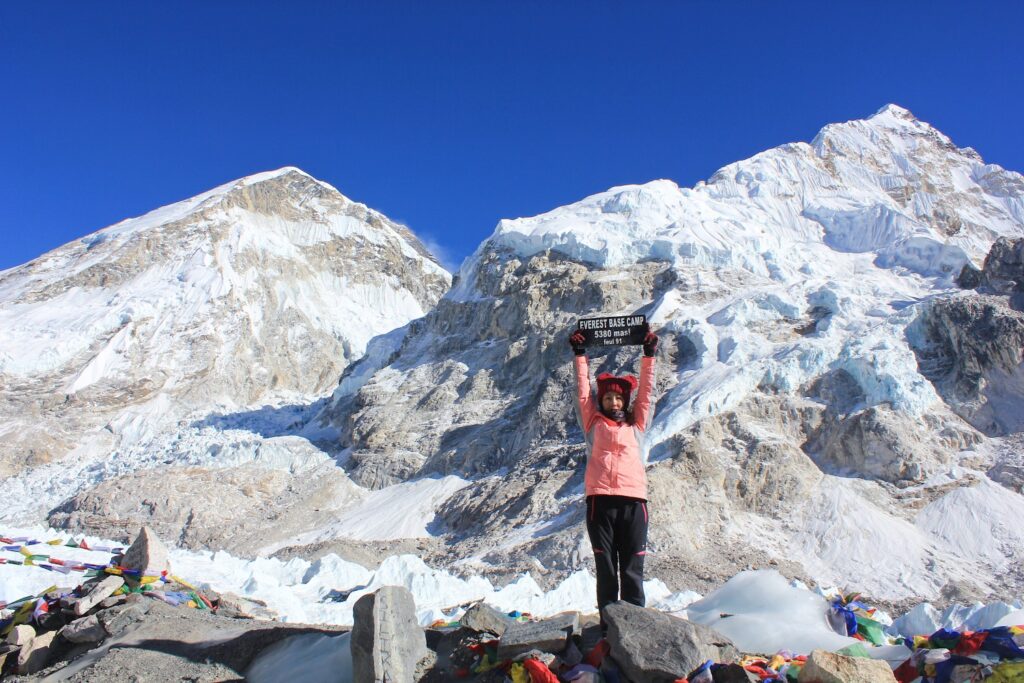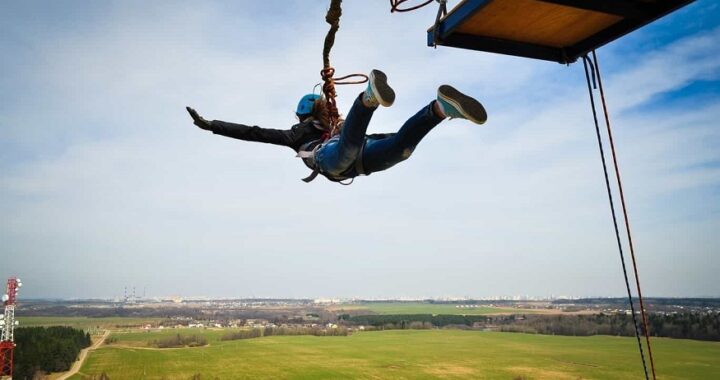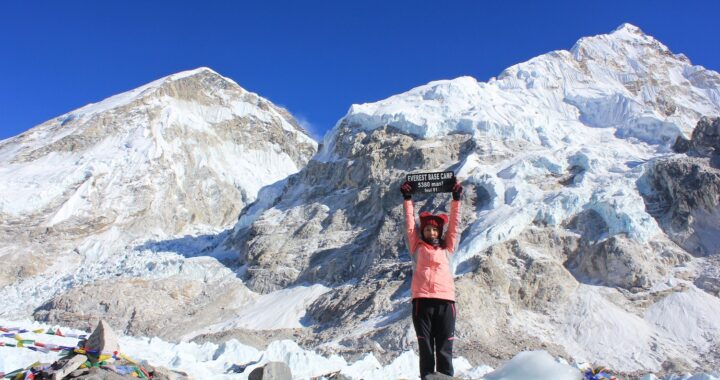The Hardest and Most Beautiful Thing I’ve Ever Done: Everest Trekking with Sherpas

The trek to Everest Base Camp was the most physically grueling and breathtaking endeavor I’ve ever experienced. It challenged every boundary — mental, emotional, and physical — but it also offered me moments of sheer wonder and a profound sense of connection to nature, to people, to myself. With snow-draped giants on both sides, each step I took on the ‘roof of the world’ seemed as though I was dreaming of a world created by hardship and beauty.
Everest Base Camp My first time in Lukla, on arrival, my trek had started with much pomp and nervousness, flying into Lukla and heading out into a world so unlike anything I had known. The higher I climbed, the more I realized how much I depended on the Sherpas walking alongside us. These had been mountain guardians, carrying not just our bags, but our spirit. With calm smiles and unyielding strength, they led us along rocky trails, over suspension bridges rippling with prayer flags, and up steep paths that felt like they would never end. They turned weariness into resolve.
There were days when the thin air slowed me to a crawl, when breathing was done pulling air up through a straw, and cold cut through me. But there were also mornings when I woke to golden light on snow peaks, evenings passed around a fire listening to stories, and moments of quiet contemplation that revealed nothing but silence and sky.
And getting to Base Camp was not just a destination — it was a vibe. Pride, humility, and awe flowed through me at the same time. I understood that the process was as important as the destination. To trek with the Sherpas was to learn about resilience, respect for the mountains, and the silent strength of those who make their home there. Mount Everest revealed beauty to me not just in landscapes, but in people, in effort, in persistence. It was the most difficult thing I’ve ever done — and it changed me forever.
Starting a New Life: The Breakthrough Formula of Hope
The Everest Base Camp trek is more than a hiking trip – it’s an experience of a lifetime that will change the way you see your life. When you decide to go for it, from your very first step, you’re entering a story of exploration, endurance, and connection with nature at its rawest. It starts for many, not with boots on a trail, but with a dream of standing in the shadow of the world’s tallest mountain, of pitting oneself against the Himalaya, its wind, and its majesty.
What makes the EBC trek life-changing is not just the destination, but every step that leads to it. You’ll trek through remote villages, across ancient suspension bridges, and up twisting paths that introduce some of the planet’s most stunning landscapes. But it’s also about the interior journey — overcoming insecurities, learning to breathe up high, and choosing to live lightly and deeply in the present.
Whether you are a world traveler or a first-time trekker, the Everest Base Camp trek strengthens your body, sharpens your mind, and warms your heart. It instills patience, humility, and gratitude in ways few other things can accomplish.
It’s not only about reaching base camp — it’s about who you are along the way. And once you start down the path of it, nothing might ever be the same again.
Get in shape: Mentally and Physically
It takes more than a sturdy pair of boots to trek to Everest Base Camp; it requires mental determination and physical preparation. The elevation, rugged landscape, and long days of trekking test your stamina as well as your resolve. It’s why the preparation starts well before you set foot on the trail.
Physically, you’ll want to develop cardiovascular strength, core strength, and muscular stamina. Think long hikes with a sack of bricks on your back, uphill walking, and strength training. You need to prepare your body for the 5-7 hour treks on five to seven consecutive days with a gain in elevation. Train at higher elevations if you can, or use incline machines to get the feel of the altitude.
Himalayan Base Camp Trek. The mental challenge is equally demanding, if not more so. Hiking through a challenging environment, weather changes, and altitude-induced symptoms can challenge your ability to cope. It is the undetermined path that is the key, and one must approach the journey with an open mind and a patient heart. Meditation, visualization, and journaling to help your brain develop coping strategies for the emotional and psychological part of the trail.
And don’t discount the importance of good gear — high-grade boots, layers for heat, and a comfortable backpack are essential. But more important still is the right spirit: a spirit that can appreciate the crawl of the mountains, the ineffable unpredictability of a view, and the sheer simple profundity of trail life.
Body and mind training change the trek from a trial to a path of self-development.
First Steps: Meeting the Sherpas and Trek Beginnings
And your adventure hits its stride when you connect with your Sherpa guides — like all the Sherpas of the Himalayan treks, the soul and blood of your Everest Base Camp trek adventure. On arrival in Lukla, the air is thin, the landscape dramatic, and your blood probably starts to race. It’s here that you find the group to support, guide & inspire you the whole way.
Sherpas are not just mountain guides; they are the cultural connectors between trekkers and the Himalayas. Their familiarity with the land, the elements, and local idiosyncrasies is invaluable. But it’s the warmth, humility, and humor of which they are most in evidence. As you start your hike through verdant forests and along roaring rivers, these first steps on the trail are full of wonder, potential, and the start of connection.
The first part of the hike is a gentle warm-up, typically from Lukla to Phakding. You come across chortens, prayer wheels, and stone mani walls etched proclaiming Tibetan mantras, all evidence of spiritual journeys that are part and parcel of physical ones.
These moves may sound small, but they portend something much bigger. Every step forward takes you one step closer to the mountains, to your team, and to a version of you carved by the trail. From the laughs with Sherpas to time spent alone under the sky with head cocked back, the trek commences not with a hike — but with connection and wonder.
The Struggle is Real: Mental and Physical Obstacles
The Everest Base Camp trek is one of the most stunning in the world, but also one of the most challenging. You are now hiking, the elevation is increasing, the terrain is becoming steeper and rockier, and with each step, you are being challenged in ways you haven’t before. You’ll be fighting more than just muscle fatigue; you might also contend with the beginnings of altitude sickness — headaches, shortness of breath, and sometimes nausea.
Physically, the challenge is real even for experienced hikers. The long days, light air, and cold nights can be wearing. Psychologically, the isolation and sluggish pace can allow doubt to seep in. You might doubt your strength, your speed, and even the wisdom of taking the hike at all.
Everest Base Camps. But if there’s no struggle, then the trek isn’t worth making anyway. You find a tough streak you never knew existed. You learn to take it one step at a time — quite literally — and to trust your guide, your body, and the process. Even other trekkers can be unexpected wellsprings of strength; the encouragement of a Sherpa or the hospitality of a teahouse proprietor can buoy your spirits in surprising ways.
These obstacles serve as a reminder that growth is usually accompanied by some form of discomfort. The struggle is real, but so is the triumph of pushing through.
Moments of Magic: Awe on the Horizon and Silent Joy
The Everest Base Camp trek is tough, yes, but it is also replete with scenes that are breathtaking, not just because your breath has been stolen by the altitude, but also by the sheer beauty and tranquillity. The magic happens when you least expect it – a sunrise on the face of Ama Dablam, the sound of yak bells in a silent valley, or a couple of shared smiles with these new marvels, adore them through a steaming cup of tea in a modest mountain teahouse.
The scenery gets more dramatic as you climb through villages like Tengboche and Dingboche. Snowy summits soar above you, prayer flags flutter in the cold mountain air, and the Milky Way spreads across a sky uncontaminated by city lights. These are the scenes you could never fully capture on film — but are burned into your mind for all time.
But some of the most moving moments are not grand but quiet. A brief moment of stillness is granted as you pause to catch your breath and to appreciate how far you have come. Listening to a Sherpa describe growing up in the mountains. A humble meal that tastes like a banquet after a day’s hard hike.
These little soulful moments are what make the EBC trek more than a physical challenge, a spiritual journey. You go for the mountains, but it’s the magic of the undertakings — the connections, the solitude, the realization of your strength — that sticks with you long after you’ve returned home.
The Role of Sherpas: Strong, Wise, and Supportive
The Sherpas truly make any Everest Base Camp Trek Cost. They are incredibly strong, but their real worth is much more than what comes in a package. From the instant the trek starts, Sherpas are guides, protectors, cultural ambassadors, and, for some trekkers, the friendly but firm kick when they’re reaching their limits. Their centuries-based intimacy with the mountains, brought to life through tradition and spiritual devotion, is a grounding and inspiring force on the trail.
They know every twist and turn of the trail, the erratic weather pattern, and the signs of altitude sickness before most trekkers even recognize the symptoms. Their quiet confidence and easy calm are an anchor in this ever-shifting sea of the Himalaya. Whether it’s steadying a backpack strap, making you that warm cup of tea after a long day, or just smiling at you when you get weary, their support is evergreen.
But what you get from them in abundance is humility. They are life-giving, but they never roar for credit or applause. Their wisdom is often found in small moments of sharing — advice on how to breathe better at altitude or a story told around the fire about the spirits of the mountains. These encounters turn into enduring memories that stretch far beyond the duration of the trek. Together, the Euro company with Sherpas and already the route changes. They don’t just assist you in getting to Everest Base Camp, they contribute to an experience that is so much bigger than just a mountain pass, but an exchange of strength, respect, and human interaction.
Highs and Lows: Emotional Peaks on the Trail
Hiking to Everest Base Camp isn’t just a physical challenge – it’s an emotional journey of highs so high and lows so low that they’re impossible to even begin to comprehend. The wires follow you relentlessly as soon as you step out from Lukla, across not only the rocky road of the Himalayas but also through the trails of your soul. The beauty is obvious and overpowering — jutting peaks, fluttering prayer flags, villages trapped in time — but so are the hardships.
The longer the days become, the more fatigued you get, and altitude becomes an invisible weight resting on your lungs and mind. Small victories — such as climbing a hill, eating a meal or getting a good night’s sleep — become the equivalent of Mount Everest, if Mount Everest only had a relative oxygen deprivation of 94, not everyone was born with an emergency oxygen canister rattling below his or her seat and the entire summit were made of oatmeal. There are times when the uncertainty sinks in, when you wonder why you came and whether you will make it. But in the mix, too, are the highs — rising to sunrise over Ama Dablam, standing in the silence of a Himalayan valley, or chuckling with trekkers and Sherpas after a long day.
It’s those highs and lows that make the climb a transformative journey. Every obstacle conquered is a point of pride. Each shared meal, each evening around a fire, cobbles connection into the journey. The encouragement of the Sherpas, the companionship of other hikers, and the seeming majesty of the mountains pick you up even in the bleakest moments.
When you’re approaching Base Camp, you’re not just physically stronger — in between, you’re also emotionally open, more present, and deeply connected to the world outside.
A Dream Achieved: Making It to Base Camp
Trek to Mount Everest Base Camp A summit push for those attempting the actual peak takes days of effort, altitude, and anticipation; arriving at Everest Base Camp is that summit push’s level counterpart. One minute you’re trekking through forests, crossing rivers, scaling ridges, and traversing through quiet mountain villages, when suddenly, before you stands the world’s highest peak: something that can only be described as an entirely surreal experience. It isn’t just a corner on a map where you take a left; it’s a test of resolve, a location where so many steps, breaths, and heartbeats ultimately meet.
The ascent from Gorak Shep is frequently the last push, and it is not the steepest section by any means, but every step is heavy in the thin air. But when you crest the final ridge and see the landmark Base Camp boulder, festooned with prayer flags and ringed by glaciers, all the exhaustion falls away. There’s no ring of cheering fans, no view from the summit — only an enormous sense of accomplishment.
It’s in that moment you realize the journey was never just about making it to the Base Camp. It was about every little triumph along the way, every sunrise that saluted you, every Sherpa who guided you up the path, every inner monologue you had to silence. People hug and cry; they take photos, or they just sit in silence, trying to take in the weight of the moment. It’s humbling and very nourishing.
You don’t come back from Base Camp with a trophy — you come back with a story carved into your soul, a dream come true, and a deeper knowledge of your limits and strength. It’s a place that kicks off the next leg of your journey, not a place to end it.
Life Principles Learned in the Mountains
The life lessons learned while trekking to Everest Base Camp extend far beyond trail maps and trekking poles. The Himalayas are big, wild, humbling, and forces of nature that insidiously command respect and submission. Each day on the trail is a reminder of how small we are in the scheme of things, yet how the human spirit can be so powerful when it is pushed to the edge.
If there’s anything to take away from it, is patience. The mountain makes no haste, and so should you. Acclimatization days are a metaphor for life: Sometimes, to advance is to stand still, and to catch your breath, to let your body — and your mind — come to terms with where you’ve been and where you are. You realize that listening to your body and honoring the journey is more important than getting to a particular goal quickly.
Another lesson is resilience. Altitude, cold, fatigue — we are deprived of the comforts we have come to expect. But also, what they have found is this inner strength that many of them didn’t know they had. With the help of Sherpas and other trekkers, you discover the power of community, of sharing burdens and pleasures.
If there’s one overarching lesson, perhaps it’s the value of simplicity. On the mountain, everything is stripped back — you, your belongings, your needs, your distractions. Life is stripped to the essentials: food, warmth, mobility, and connection. In simplicity, there is clarity.
The mountains are quiet teachers, and their lessons stick with you long after you return to the clamor of the daily world. They change your point of view, quiet your nerves, and deepen your love, giving you a sense of quiet confidence way beyond the moment … a parting gift.
Final Thoughts – Gratitude, Growth, and the Future
Everest Base Camp Trek When the trek is done and the boots are off, what you are left with is a profound sense of gratitude and transformation. The Everest Base Camp trip is more than a physical feat — it’s a life experience that changes the way you see the world and yourself. Every difficulty endured, every summit gazed at, every quiet evening spent in a teahouse becomes a part of you, sewn into your memory and tinged with just enough pride and humility.
Gratitude is easy here, toward the Sherpas who led the way with patience and wisdom, toward the mountains, who offer their presence with silent dignity, and toward your own body, strained under that relentless pressure down, holding up its part of the bargain. You come back with a fresh appreciation for resilience in yourself and others. This shared experience commences with strangers on the trail and often grows into lasting friendships that are formed of shared challenge and victory.
And there’s an inarguable degree of personal growth. The mountains teach you how little you need to be plenty, how strength doesn’t always roar, and peace can be found in the silence of the Himalayas. You may return home to the same life, but with a different perspective — more aware, more patient, more grounded.
Further in the journey is a compass. Now that the world is in chaos, you recall the steady tempo of the trail. When things get tough, you remember the climbs; the breathless highs that you conquered. The Everest journey never really stops — it becomes a part of you, a testament to what you can do and how beautiful it can be to step outside your comfort zone.
What is the hardest thing about climbing Everest?
Scaling Everest is considered to be among the most challenging and deadly pursuits in mountaineering. Most people take it that the sheer physical difficulty is the worst, but that’s not the case — it’s the altitude and the mind’s reaction to the strange environment. At high elevations, levels of oxygen fall to about a third of those at sea level, so everything, even the simplest action, feels impossibly hard. Altitude sickness, frostbite, exhaustion, and disorientation are routine, and the dangers multiply exponentially as climbers ascend into the “death zone” at and above 8,000 meters.
Then there is the unpredictable and frequently violent weather. Climbers may be beset by snowstorms, heavy winds, and plunging temperatures unannounced. Timing can be everything, and even the most prepared of climbers can be left stranded for days in high-altitude camps waiting for a suitable summit window. The psychological cost is just as grueling — fear, isolation, and the burden of making life-or-death decisions haunt even the most experienced high-altitude climbers.
Generating news and photographs is trudging to Everest Base Camp, doable for most with preparation; summiting Everest, the news story, not so much, although there will be those 200 or so new faces lining up. It’s a multi-week adventure that requires total dedication, resilience, and luck. But for those who make it to the top, the challenges are met with a moment unlike any other, one which unites effort, endurance, and awe at the planet’s highest point.
What is so special about Everest Base Camp?
Everest Base Camp Treks is on the bucket list of adventurers everywhere — not just because it’s near the world’s tallest mountain, but also because of the unbelievable journey it requires to reach it. Base Camp, which sits at 5,364 meters (17,598 feet), is a desolate, frozen wasteland next to the enormous Khumbu Glacier, with stunning 360-degree views of iconic peaks like Nuptse, Pumori, and, of course, Everest looming large in the vicinity.
But what makes Base Camp so special is the journey that takes you there. The hike leads you through an ever-changing patchwork of wilderness, including dense forests, roaring rivers, alpine deserts, and glacier fields. Along the way, you trek through traditional Sherpa villages, Buddhist monasteries, and prayer-flag-draped passes that are as culturally enriching as they are visually stunning.
Every step toward Base Camp is at once a challenge and a wonder. The altitude makes the trek strenuous, but you’re buoyed by your fellow trekkers, the encouragement of the Sherpas, and the serene majesty of the Himalayas, which you won’t find elsewhere. Getting to Base Camp is not just about stepping into a renowned spot; it’s about what you have had to overcome to be there. It’s about resilience, daring, and a mutual dream fulfilled by people around the world.
The Base Camp of Everest is more than a place—it’s a sort of pilgrimage one makes to find perspective, challenge, and beauty in their most raw and pure form.
the many times has a Sherpa climbed Everest?
Mount Everest has been summited more times by a heroic Nepalese Sherpa climber named Kami Rita Sherpa. To date in 2023, he has reached the highest peak in the world 28 times, a remarkable achievement that is a testament not only to Tenzing’s unparalleled mountaineering ability but also to the superhuman strength of the local Sherpa people. Kami Rita was born in the Solukhumbu region of Nepal and started climbing when he was a teenager, according to his website, and has now spent most of his adult life in the high-altitude world of Himalayan expeditions.
His new ascents also proved once again not just his physical ability and skill, but the integral role of Sherpas in Himalayan climbing. They are typically the first ones to set ropes, put in camps, and lead the way through the most treacherous parts of the route, allowing climbers from all over the world to reach the summit without going splat. While most foreign climbers may summit once, or maybe twice, in their lives, Sherpas like Kami Rita make multiple ascents as part of their job, frequently under conditions that are even more challenging.
This is more than a personal feat; it’s a testament to the close bond Sherpas share with Everest and the incomparable role they play in high-altitude mountaineering. Kami Rita remains an inspiration to generations of climbers, a reminder that behind every successful Everest summit are the silent strength and experience of the Sherpas.
What to do after the Everest Base Camp Trek?
Mount Everest Base Camp Trek Most trekkers who finish trekking the Everest Base Camp are left with a mishmash of exhaustion, satisfaction, and a strong feeling that they should do something to reflect on what they have just done. Indeed, it’s normal to arrive back in Kathmandu with a headful of adventure and weary legs, so it serves as the perfect chance to ‘take it easy’, recover, and congratulate yourself! Make a point to allow your body to recover from fatigue— gentle stretching, hydration, and good food are all nurturing to your body’s need for “R and R.
Most of the trekkers prefer to discover Kathmandu culture after the trek. Explore some of the city’s most famous sites, including Swayambhunath (Monkey Temple), Boudhanath Stupa, and the historic Durbar Squares. These are the places to get a sense of Nepal’s profound spiritual roots and history and to enrich your adventure beyond the mountain views.
A relaxing activity post-trek is getting a traditional Nepali massage or spa treatment to help soothe your tired muscles. It’s also a great time to bond with fellow trekkers over a celebratory dinner, show each other photos and recount tales of adventure, and reflect on the journey you have just completed.
If you’re feeling more adventurous, take a short journey to Pokhara or Chitwan National Park to reach Nepal’s lakes, as well as its mesic lowland forests. Or, opt for a scenic mountain flight for one last glimpse of the Himalayas from the air.
Miscellaneous: Take this time to kick off the trek journal, sort your photos, and start at least a little contemplation about how the trek has affected you. The lessons and memories from Everest often influence the way you approach future adventures — and even life itself — long after you have descended.










